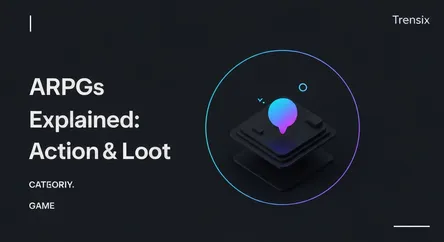Game
ARPGs Explained: Action & Loot

Discover ARPGs (Action Role-Playing Games), a genre blending real-time combat with deep character progression and addictive loot systems.
What is it?
ARPG stands for Action Role-Playing Game, a genre blending the character progression of RPGs with real-time combat. Unlike turn-based games, players directly control their character's attacks and movements in a "hack and slash" style. The core gameplay revolves around defeating hordes of enemies, collecting increasingly powerful equipment (loot), and leveling up to unlock new skills and abilities. Iconic series like Diablo are prime examples, popularizing an addictive loop of fighting monsters for better gear to fight stronger monsters. This focus on action and loot defines the ARPG experience.
Why is it trending?
The ARPG genre maintains its popularity due to its highly satisfying and accessible gameplay. Major releases like Diablo IV and indie hits like Last Epoch, alongside evergreen titles such as Path of Exile, continue to attract millions of players. The genre's power lies in its compelling feedback loop: players are constantly rewarded with new loot and abilities, creating a "just one more run" incentive. The implementation of live-service models with seasonal content also keeps communities engaged long-term, ensuring there's always a new challenge or piece of gear to chase after.
How does it affect people?
ARPGs offer a strong sense of progression and empowerment, which can be highly engaging and rewarding. The constant cycle of overcoming challenges to earn better loot creates a compelling experience that encourages dedication and long play sessions. Many ARPGs also feature robust online multiplayer modes, fostering communities around cooperative play, trading, and "theory-crafting" optimal character builds. This social aspect adds significant depth, transforming a solo grind into a shared hobby and creating dedicated player bases that invest hundreds of hours into mastering the game and its systems.